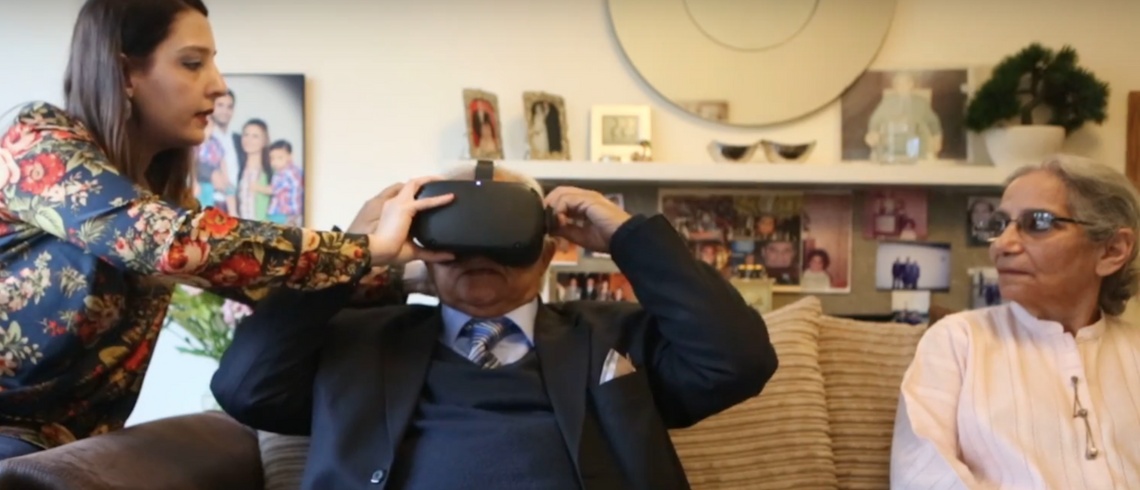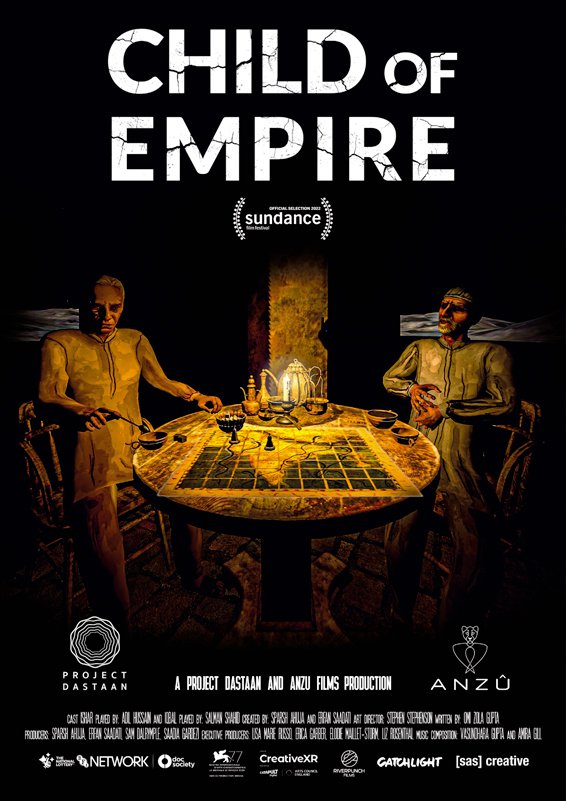Project Dastaan: Technology and storytelling for social impact and awareness

Project Dastaan: Technology and storytelling for social impact and awareness
Using new technologies to reconnect migrations across the India-Pakistan border and create awareness of South Asian history as British history
The partition of India in 1947 and the end of the British Raj created the largest forced migration event the world has yet seen. Yet, there is little debate on the impact of empire on India in the UK. Further decades of conflict between India and Pakistan have diminished opportunities for cultural exchange between its peoples. Saadia Gardezi’s (PAIS PhD student) work uses Virtual Reality (VR) technologies and animation to reconnect people across borders and to create empathy and awareness about empire, migration, and the partition of India in 1947.
The challenge
The partitioning of British India in 1947 caused the largest forced migration in human history. Overnight, tens of millions of people fled their homes and 1-3 million people perished. 75 years later, few refugees have been able to return home due to visa issues, a militarised border, and old age.
Thousands of abandoned mosques, havelis and palaces continue to lie neglected across Northern India. Likewise, crumbling temples and gurudwaras litter Pakistan or Bangladesh. Large-scale migration severed the link between tangible and intangible cultural heritage. Traditions were robbed of their context, histories developed into folklore and inaccessible hometowns and pilgrimage sites become almost mythical to the migrant communities. South Asia has seen this phenomenon at its largest scale but similar situations have occurred across the world as formerly cosmopolitan societies balkanise on the basis of ethnicity, religion or language, and communities migrate abroad in search of a better future.
Further, almost 5 per cent of the population of the UK is of South Asian heritage, but there is yet to be a robust discourse on how the British empire colonised the Indian subcontinent and the terrible haste and negligence with which new borders were drawn.
Project Dastaan responds to these challenges of migrants being unable to return and the lack of understanding and compassion around the shared histories of the peoples of South Asia. There is also a conversation to be had about education and decolonisation where Indian history is not considered British history.
Our approach
A two-pronged approach to the problem was through a social impact program to reconnect partition survivors to their ancestral homes, as well as a multimedia storytelling project to educate general audiences about partition and migration in the subcontinent.
Virtual Reality (VR) technology can be used to bridge borders, helping both to preserve intangible cultural heritage and to bring attention to physical heritage. At Project Dastaan, we use virtual reality to facilitate "virtual returns" for migrant families after the partition of India, Pakistan and Bangladesh. Such research is experimental, as participants are asked what locations from their childhood memories they would like to see. A cross-border team of filmmakers then records the geographic reality of these places in the present day, allowing partition survivors to virtually explore their childhood homes, schools and sacred sites using a VR headset. Our research turns the researcher-participant dynamic from a one-way interaction to a loop. Interviews are recorded not just for the sake of creating archives but to complete the participant’s quest to see their home again.
The consequences of our approach can best be seen in the story of Khalid Bashir Rai. Rai grew up near the India-Pakistan border, in a small village called Kasbah Bhural in present-day India, and was only 7 at the time of Partition. In our interview, Rai told us he did not think that anything from his childhood still exists today. Kasbah Bhural is absent from Google Maps, and there are no photographs of it online. He had heard rumours that Sikh migrants to India had settled there, and any structures which had not been bulldozed had been destroyed in a flood some years later. However, our team found several crumbling mosques and a perfectly preserved medieval Sufi shrine, venerated - unusually - by the Sikh community which had arrived here after partition. Rai told us we had transported him back to his childhood. He encouraged his entire family to view the experience, sparking conversations amongst them about their pre-partition family history. The monuments we capture for people are primarily of local relevance, smaller monuments that would otherwise not be archivally recorded: Due to Kasbah Bhural’s remoteness, the medieval shrines and mosques there have – to our knowledge – never been recorded. Sikhs who now venerated it had little knowledge of the shrine’s pre-partition origins, other than what some Hindus from another nearby village had told them.

To carry forward how important these oral histories are we have created a series of films. Child of Empire is an animated virtual reality (VR) docu-drama experience which immerses viewers in one of the largest forced migrations in human history: the 1947 Partition of India and Pakistan. It is inspired by the testimonies of two of our participants. The film introduces the viewer to the problematic positioning of the British Empire in 1947 and VR animation helps put the viewer into the shoes of the migrant in an empathy-building process. Additionally, we have released an anthology of animated shorts called Lost Migrations, and the films fictionalise three lesser-known narratives of partition: statelessness, food and culture, sea borders and women’s experiences. These have been produced through a special collaboration between Indian, Pakistani and UK artists (Puffball, Spitting Image and Project Dastaan) and premiered at the British Film Institute earlier this month. These films are on tour in the UK and have been released to commemorate the 75th anniversary of the end of British rule in India and Pakistan in 2022.
We have also launched an interactive website map of India, Pakistan and Bangladesh. The map has been imagined as an educational tool and contains important timelines and summaries of histories of how partition impacted different areas of the region. The current conversation on partition is often based around the division of Punjab and the conflict in Jammu and Kashmir. Our map, however, sees partition as a cross-regional event impacting even South India and Northeast India and includes oral histories from every region. The map is available in English, Urdu, Bengali and Hindi.
Our impact
Our work has allowed a democratisation of history, heritage, and historiography. The democratisation works at the micro level to carefully track down locations which the conventional textbooks might not illustrate but are relevant to tinier communities. The focus is on people who were as much a part of history as monarchs and elites. It also personalises history and presents stories which are more human than statistical facts, thus retaining history and heritage as academic branches of the humanities and social science. Project Dastaan has recorded the oral histories of 30 participants, which includes participants from India, Pakistan and Bangladesh. It has reconnected 15 of these participants to their ancestral homes using VR and 360 film.
The films have been met with popular and critical acclaim. Child of Empire premiered at Sundance Film Festival and has won the XR History Award by Körber-Stiftung (Germany) and VRHAM! Festival to honour innovative work that uses immersive technology to explore history in digital ways. Lost Migrations has premiered at the British Film Institute (BFI). Project Dastaan has been invited to exhibit its films, photography and interactive map at Victoria and Albert Museum, Birmingham Museum and Art Galleries, SOAS London, BFI South Bank, City Hall London, Derby Museum and Bradford Cathedral in the UK, and Partition Museum India and National History Museum Pakistan. The project has been funded by the British Council, National Geographic Society, Catchlight, Australia Arts Council and Arts Council England and the UKRI-funded project at SOAS, Border Crossings, is surveying audience reactions to the films.
This work has also allowed Pakistani and Indian animators to collaborate, something that is very difficult due to the political context of India and Pakistan.

